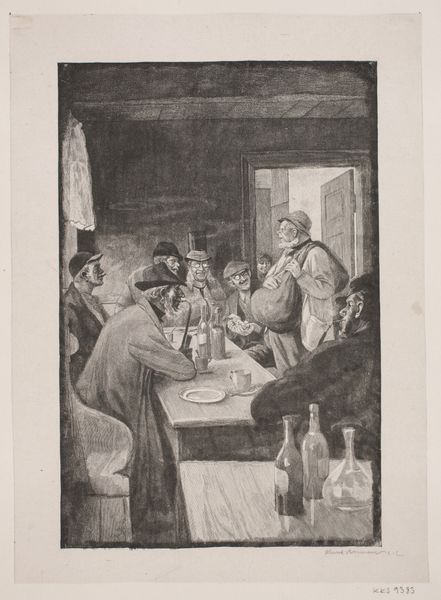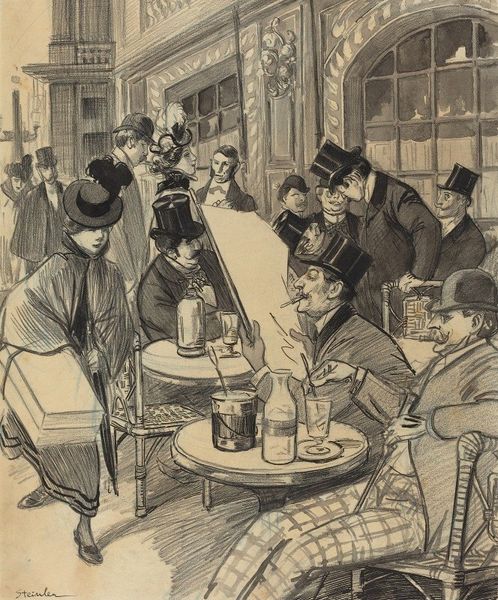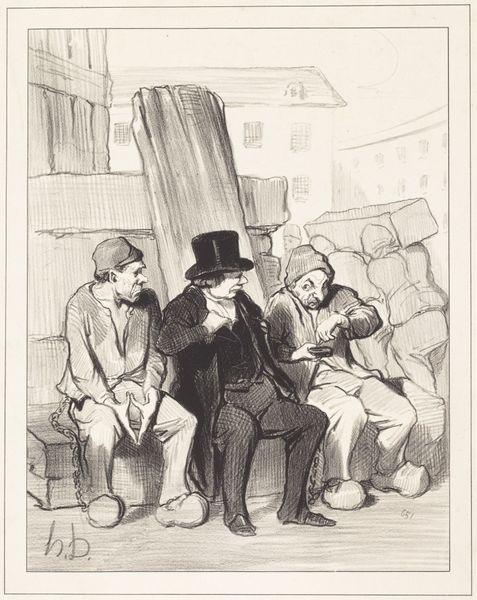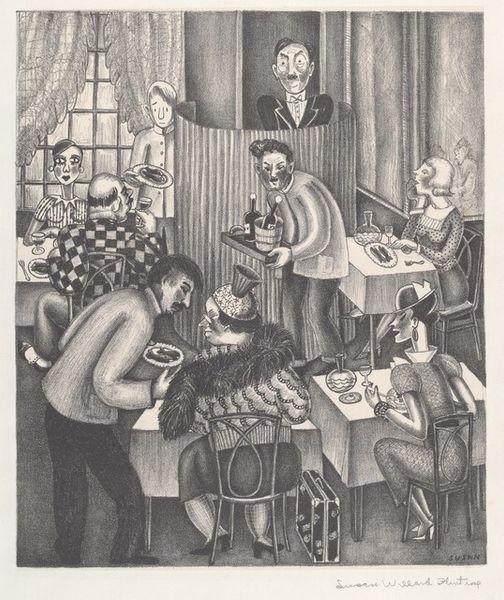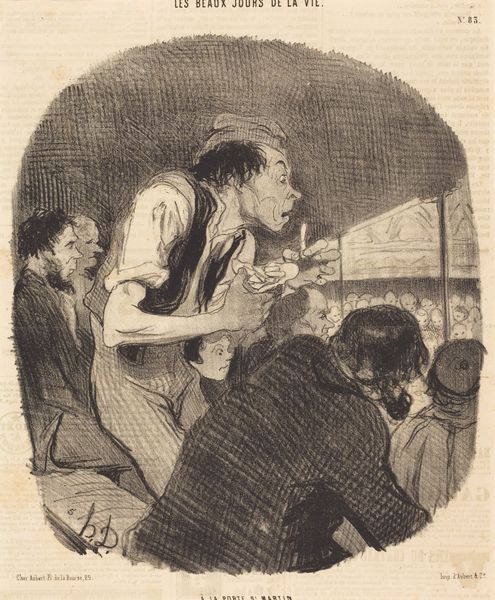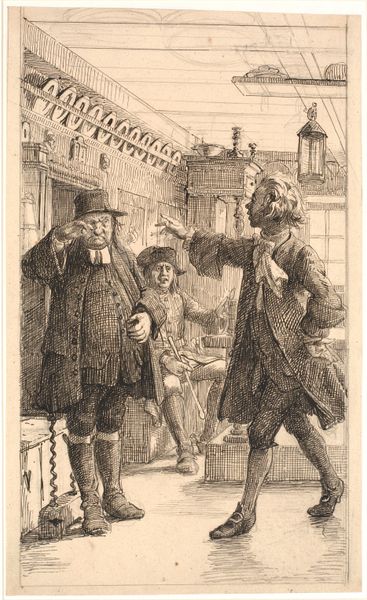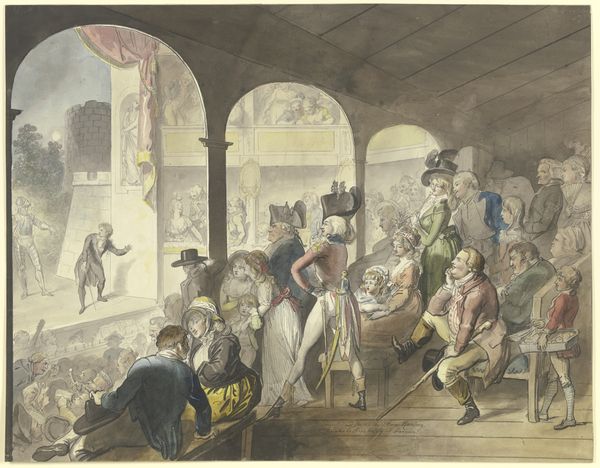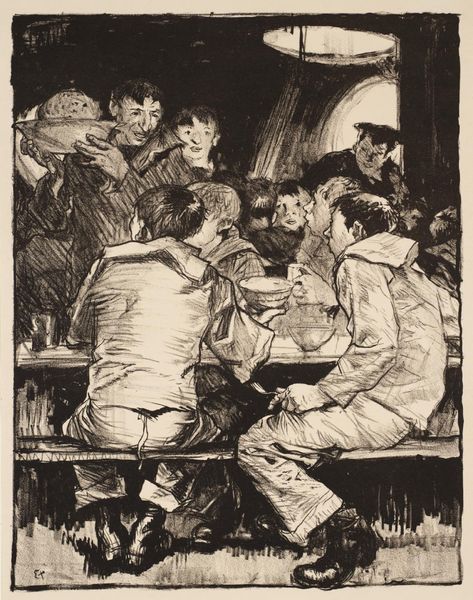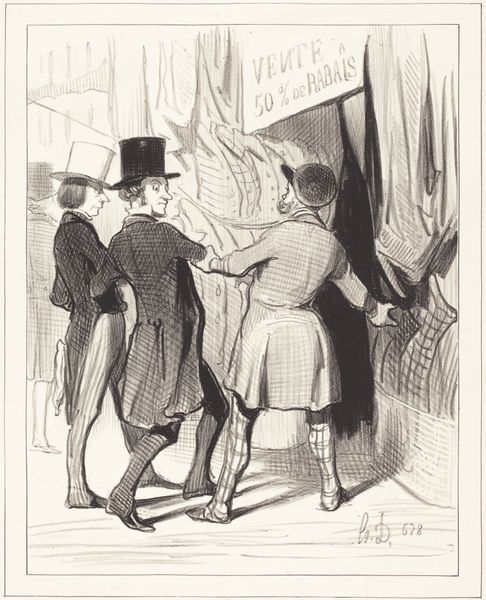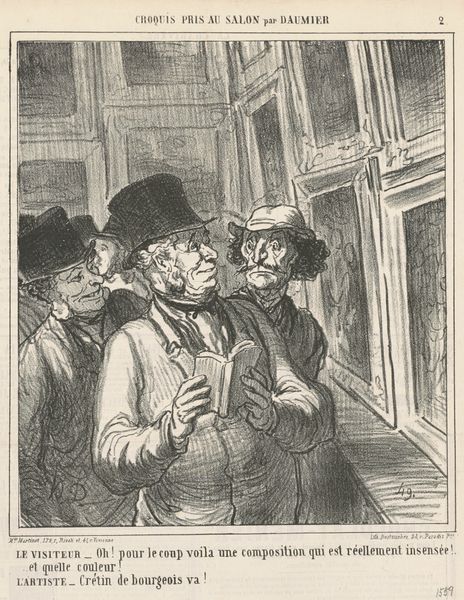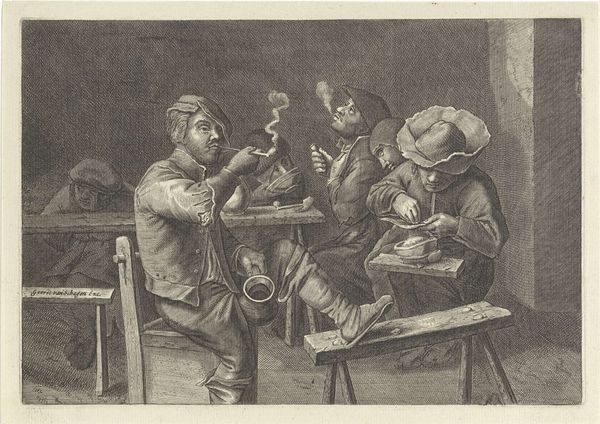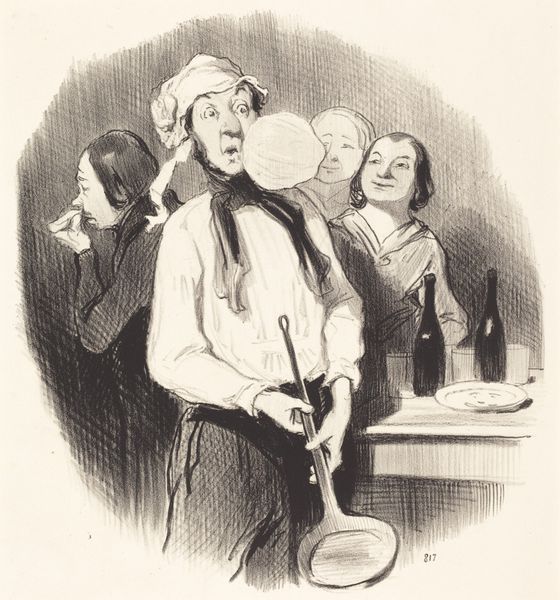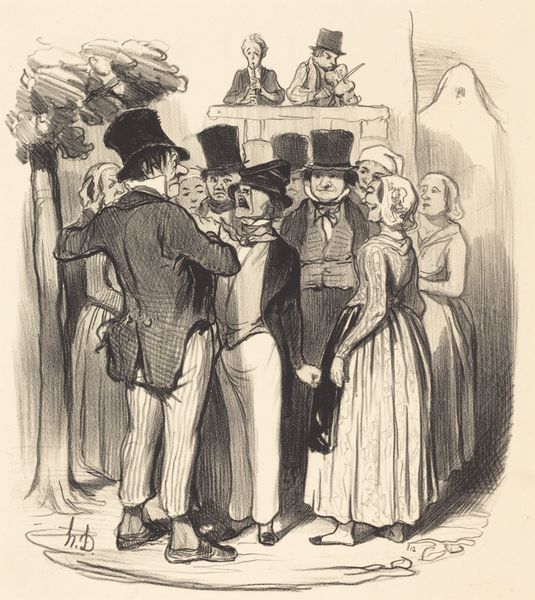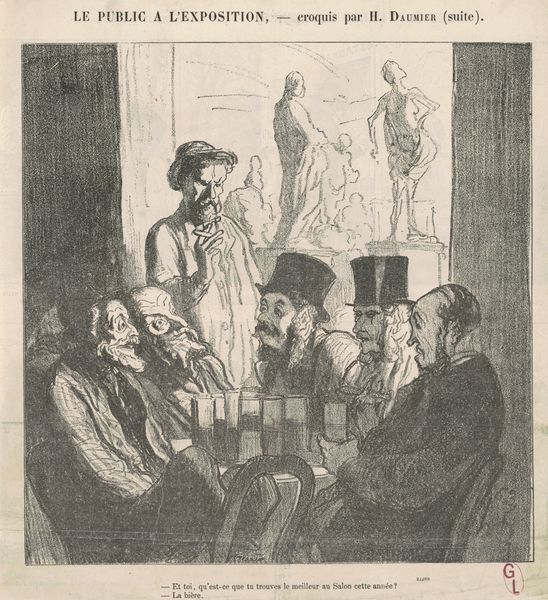
Nightlife in Philadelphia—an Oyster Barrow in front of the Chestnut Street Theater 1811 - 1816
0:00
0:00
painting, watercolor
#
portrait
#
narrative-art
#
painting
#
watercolor
#
romanticism
#
cityscape
#
genre-painting
#
academic-art
Dimensions: 9 3/16 x 6 13/16 in. (23.3 x 17.3 cm)
Copyright: Public Domain
Editor: Here we have John Lewis Krimmel’s "Nightlife in Philadelphia—an Oyster Barrow in front of the Chestnut Street Theater," made with watercolor somewhere between 1811 and 1816. It seems like a rather jovial, lively genre scene. How do you interpret this depiction of urban life? Curator: Well, let's consider the materials. Krimmel chose watercolor, a medium often associated with sketches and studies rather than finished, high art pieces, yet he’s using it to depict a very public scene of consumption and labor. What does that choice suggest about the value he places on this subject? Editor: That's interesting. I guess I hadn't considered the material as a deliberate choice in defining the subject. Curator: Exactly! Look closer at the figures around the oyster barrow. This isn't just about documenting nightlife; it's about showing a class dynamic at play. We have finely dressed patrons juxtaposed with the labor of the oyster vendor. Consider the oyster barrow itself – a means of production and distribution right on the street. What does this reveal about the social structures of early 19th-century Philadelphia? Editor: I see what you mean. It's not just a charming street scene; it's showing the mechanisms, the labor and commerce that made the city function. It's almost like the barrow is a stage, highlighting different societal roles. Curator: Precisely. And by immortalizing this moment with watercolor, Krimmel elevates the everyday materials and labor, challenging any established hierarchies of genre painting itself. It prompts us to reflect on who is visible and whose work sustains urban "nightlife." Editor: It’s much more complex than I initially thought. Thinking about the materials and their socio-economic implications definitely gives it a whole new layer of meaning. Thank you! Curator: My pleasure. Paying attention to materiality opens up entirely new avenues for understanding art and its reflection of the social and economic structures.
Comments
No comments
Be the first to comment and join the conversation on the ultimate creative platform.
